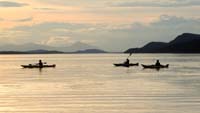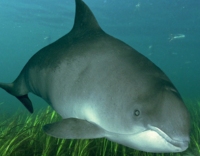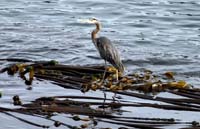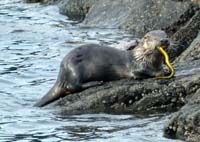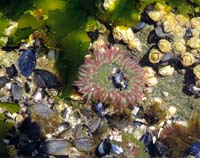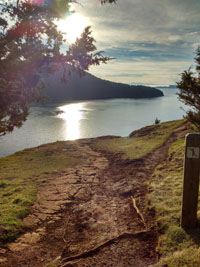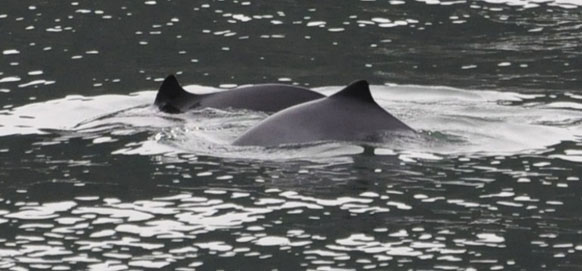Salish Sea Ecosystem Health
For current information see the Harbor Porpoise Project Website.
The Salish Sea ecosystem is one of the greatest natural assets of Washington State and neighboring British Columbia. The health of the Salish Sea is integral to the health of the regional economy and to the coastal communities around its perimeter. Three hundred years ago, the Salish Sea was brimming with life and was one of the most productive and diverse marine ecosystems in the world. It sustained indigenous people at a higher population density than found in most other parts of North America. Overfishing, by-catch, pollution, dredging, and coastal development have significantly altered this ecosystem over the last 200 years. Efforts to reduce these stressors in the last few decades have shown some positive results. However, the additional stress of warming oceans and ocean acidification brought about by high levels of anthropogenic CO2 emissions are now creating perhaps the most severe long-term threat to the Salish Sea ecosystem.
The effects of climate change and ocean acidification on marine biodiversity are complex and still not well understood. PBI’s research work contributes to the growing body of knowledge of the effects of anthropogenic stressors, including increasing CO2 levels on biodiversity in the Salish Sea. Having demonstrated the harbor porpoise as a sentinel species for Salish Sea ecosystem health, we are expanding our work to assess other indicators of marine ecosystem health to gain a better understanding of impact of climate change and ocean acidification on the Salish Sea.
Our research investigations of the harbor porpoise are continuing and expanding to new sites. We will correlate our long-term observational and underwater acoustic information on the porpoise to changes in concentrations of greenhouse gases, marine pH, increasing thermal stress, and other factors to gain insights to effects of these and other stressors (noise, fishing, habitat alteration, etc.) on the marine species. This information assures an informed and intelligent response to the types of actions that can be taken to mitigate the stress on the Salish Sea ecosystem.
PBI’s highly successful Harbor Porpoise Project has changed a species that was “too difficult to monitor,” to one that is recognized as a sentinel species for Salish Sea ecosystem health. We did this by using two metrics: land-based observations and acoustic detection. We have a strong citizen science program that trains volunteers to work with scientists to collect observation data, and we have six underwater monitors deployed now that collect acoustic data continuously. These two metrics validate each other and demonstrated that the species was a sentinel by both showing a significant decline in the presence of the harbor porpoise at our primary research site in the short time period of 4 years.
For more information about the Harbor Porpoise Project, our research results, methods and volunteer resources, visit the Harbor Porpoise Project Website. |
We are expanding our citizen science observation network to include other marine mammals, sea and shore birds and forage fish. The bird species will include: great blue heron, marbled murrelet, several grebe species, gulls, kingfishers, and bald eagles. The forage fish species include herring, sand lance and smelt. The ecosystem is complex and interrelated. We will be working with a wide variety of partners to better understand the complex interrelationships that are critical to the health of the Salish Sea ecosystem. As people learn how the wellbeing of all of these species is interwoven they will advocate for the entire ecosystem.
Photo credits: Florian Graner, Peter Morrison, Aileen Jeffries, Anna Hallingstad, Bryan Hanson
[Return to Parent Page: Initiatives]
Copyright © Pacific Biodiversity Institute
